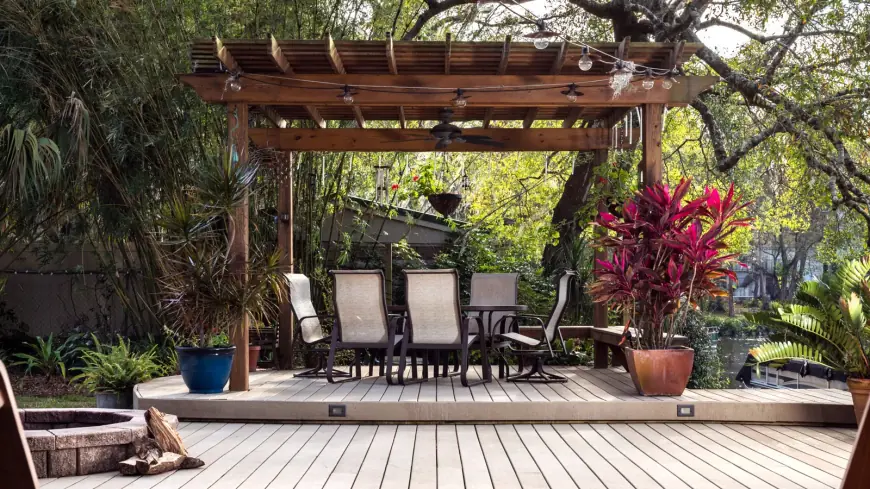How to Build a Midrange Deck That Can Do It All

Building a versatile midrange deck is an exciting challenge for any Magic: The Gathering player. A midrange deck can adapt to various strategies, balancing aggressive play with resilient defenses. Whether you're facing fast-paced aggro decks or slow, controlling opponents, a well-constructed midrange deck offers the flexibility to excel in both. This guide will walk you through the essential steps to craft a midrange deck that can do it all.
Introduction: What is a Midrange Deck?
Midrange decks lie somewhere between the fast aggression of aggro decks and the slow, methodical approach of control decks. They excel in their ability to play both offense and defense depending on the situation. By utilizing value-driven creatures, removal, and flexible spells, a midrange deck can adapt to any scenario, controlling the board while pushing towards victory. This article will provide you with all the key insights needed to build a powerful midrange deck that can handle any opponent.
Step 1: Balancing Aggression and Defense
A successful midrange deck walks the fine line between aggressive and defensive play. Unlike pure aggro decks, which aim to quickly overwhelm opponents, midrange decks rely on a more balanced approach.
· Aggression: Your deck should include creatures that can deal significant damage in the early to mid-game, putting pressure on your opponent without overcommitting. Creatures with abilities like haste or those that can scale with the game (e.g., creatures that get stronger as you play more spells) are perfect.
· Defense: Midrange decks need to have tools to fend off aggressive opponents. Include cards that help stabilize the game, like creatures with lifelink, reach, or decent toughness to protect your life total. It's important to adapt quickly and handle opposing threats while maintaining your board presence.
The key is to find creatures and spells that serve dual purposes: they help you apply pressure while also providing defense when necessary. Cards like Tarmogoyf or Siege Rhino are ideal because they can both attack and stabilize the game.
Step 2: Mana Curve and Value
The mana curve is crucial when deck building a strategy that strikes a balance between aggression and control. Midrange decks often rely on cards that provide value for their cost, ensuring that every play has a meaningful impact on the game.
A good mana curve ensures that you have something to play at every point of the game. Here's a general breakdown:
· Low-cost cards (1-3 mana): These should be your early-game creatures, cheap removal, or spells that set up future turns. Cards like Thoughtseize or Llanowar Elves can help you establish control early.
· Mid-range cards (4-5 mana): These are the powerhouses that define midrange decks. Look for creatures that scale well and spells that can clear the board or provide card advantage. Bloodbraid Elf or Kolaghan's Command are excellent examples.
· High-cost finishers (6+ mana): These cards should be game-changing. You might include a few big creatures like Cavalier of Night or a planeswalker like Liliana, the Last Hope. These finishers should provide overwhelming power to secure the game.
Balancing your mana curve ensures you never run out of gas and can keep applying pressure throughout the game.
Step 3: Choose Versatile Creatures
Versatility is a hallmark of successful midrange decks. Choose creatures that can perform multiple roles and adapt to different situations. A versatile creature can deal damage, provide defense, or offer utility when necessary.
· Creatures with multiple abilities: Creatures with lifelink, flying, or deathtouch can be extremely powerful. For example, Vraska, Golgari Queen offers card advantage while also being able to remove problematic creatures. Similarly, Scavenging Ooze provides graveyard hate while being a sizable creature.
· Scalable creatures: Creatures that grow over time or scale with other game conditions are highly effective. Llanowar Visionary and Siege Rhino both get better as you progress through the game.
These types of creatures give your deck more flexibility, making it easier to adapt to any situation. By picking creatures that can attack, defend, or disrupt, you ensure that you have options on every turn.
Step 4: Flexible Removal
Midrange decks often rely on flexible removal spells to clear the board of threats. Unlike control decks, which have fewer creatures and often rely on board wipes, midrange decks need removal spells that are efficient and adaptable.
· Instant and sorcery removal: Cards like Fatal Push, Abrupt Decay, or Path to Exile give you an answer to a wide range of threats. These removal spells are cheap and effective, and many can deal with creatures that other decks might struggle with.
· Creature-based removal: Creatures with deathtouch (like Bitterblossom or Teysa, Envoy of Ghosts) can also serve as removal in your midrange deck. These creatures can block any attacking creature, killing it instantly with deathtouch.
The goal is to make sure you have enough removal that allows you to disrupt both aggro and control decks while staying on top of the board.
Step 5: Win Conditions and Finishers
In a midrange deck, the focus is often on value and incremental advantages. However, it's essential to have clear win conditions, ensuring that you can close the game once you've established control.
Midrange decks often win by simply out-valuing their opponents. Having finishers that can take over the game is key.
· Big creatures: Creatures like Craterhoof Behemoth or Hornet Queen can quickly end games once you've cleared the board. These big creatures often have abilities that help you close out the game, either through trample or direct damage.
· Planeswalkers: Planeswalkers can provide card advantage and apply consistent pressure over time. Chandra, Torch of Defiance and Garruk Wildspeaker are excellent examples of planeswalkers that offer both value and a game-ending threat.
The win conditions you choose should reflect the strengths of your deck, either through powerful creatures, planeswalkers, or spells that provide a finishing blow.
Conclusion: Crafting the Perfect Midrange Deck
Deck building a midrange deck that can handle every opponent requires careful attention to detail. By balancing aggression and defense, focusing on mana curve and value, selecting versatile creatures, and including flexible removal, you'll create a deck that adapts to any game situation. Don’t forget to choose powerful finishers that can close out the game once you’ve established control. With these tips, you’ll be able to craft a midrange deck that can truly do it all.
When you construct your deck, remember that midrange is all about flexibility. Adapt your strategy to the game at hand and always be ready for anything your opponent throws at you. Whether you're playing at your local game store or competing in larger tournaments, a well-crafted midrange deck will serve you well.
What's Your Reaction?
 Like
0
Like
0
 Dislike
0
Dislike
0
 Love
0
Love
0
 Funny
0
Funny
0
 Angry
0
Angry
0
 Sad
0
Sad
0
 Wow
0
Wow
0

















































